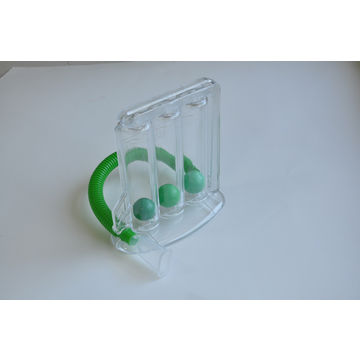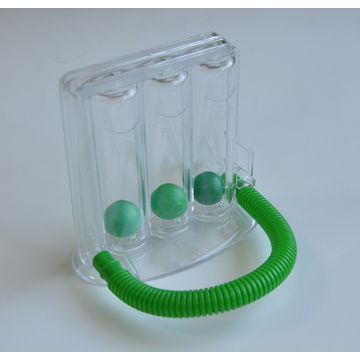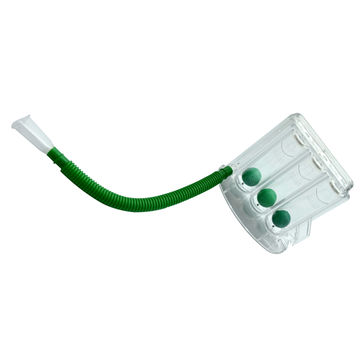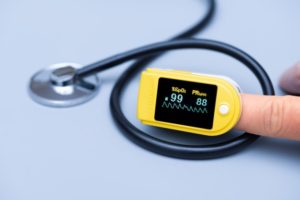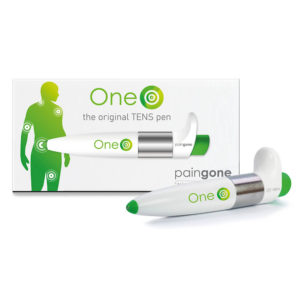by Webmed on March 15, 2020
The name sounds complicated. But this is a simple handheld gadget that helps keep your lungs clear when you’re off your feet for a while.
Maybe you’ve had surgery on your chest or belly, or you’ve fractured your ribs and find it painful to take deep breaths. Or you have pneumonia or a lung condition like chronic obstructive pulmonary disease (COPD) or cystic fibrosis. The breaths you take may not be as deep as usual. That means the air in your lungs may not move much and may not clear out any infections.
You inhale through an incentive spirometer to exercise your lungs and to get air into every nook and cranny. Your doctor may also call it a manual incentive spirometer.
The Gadget:
It’s made of plastic and is about the size of a small notebook. It has a mouthpiece that looks like a vacuum tube. When you inhale with it, the suction will move a disc or a piston up inside a clear cylinder. The deeper you breathe, the higher the piston rises.
Most spirometers have numbers on the cylinder to show how much air you take in. They also may have a gauge to tell if you’re inhaling at the right place.
How to Use It ?
You may need a couple of tries to get the hang of it. After that, a spirometer is easy to use.
Sit straight on a chair or the edge of your bed. If you’ve had surgery on your chest or belly, you may be sore there. Hold a pillow there to support it and help keep it from hurting.
Breathe out completely to clear all the air from your lungs.
Close your lips firmly around the mouthpiece. You’ll have to breathe in only through your mouth. Plug your nose if you need to.
Breathe in slowly, and make the piston rise as high as you can while you keep the indicator between two arrows to know you are inhaling at the right pace. Then hold your breath up to 10 seconds. Note where the piston stopped. While you’re holding your breath, it will gradually sink.
Loosen your lips from the mouthpiece when the piston hits the bottom of the cylinder. Breathe out slowly and rest for a bit.
Do this 10 times, or as many as your doctor recommends. Aim to get the piston higher each time.
When you finish, cough to clear any mucus from your lungs. If you’re sore from surgery, hold the pillow against you while you cough.
Your goal should be to make sure this ball stays in the middle of the chamber while you breathe in.
If you breathe in too fast, the ball will shoot to the top.
If you breathe in too slowly, the ball will stay at the bottom.
Hold your breath for 3 to 5 seconds. Then slowly exhale.
Take 10 to 15 breaths with your spirometer every 1 to 2 hours, or as often as instructed by your nurse or doctor.
Repeat the exercise every hour you’re awake, or as often as your doctor says.
Benefits:
When you empty out and refill the air in your lungs, you get rid of fluid and germs that can lead to an infection. You also exercise your lungs, so that they’re able to put more oxygen into your body. That helps you to heal and avoid lung infections.
If you’re having surgery, your doctor may want you to start using your spirometer at home before you head to the hospital. If you strengthen your lungs, you’re less likely to pick up an infection there.
Other Tips:
These tips may be helpful:
If you have a surgical cut (incision) in your chest or abdomen, you may need to hold a pillow tightly to your belly while breathing in. This will help ease discomfort.
If you do not make the number marked for you, do not get discouraged. You will improve with practice and as your body heals.
If you start to feel dizzy or lightheaded, remove the mouthpiece from your mouth and take some normal breaths. Then continue using the incentive spirometer.
We should be working to strengthen our lungs, regardless of COVID-19. However, to potentially reduce our risk of severe COVID-19, this three-pronged approach of lifestyle modifications – diet, exercise, and incentive spirometer – may help without expending significant time or expense. As Yogi Berra would say, “When you come to a fork in the road, take it!” There is no time to waste.

